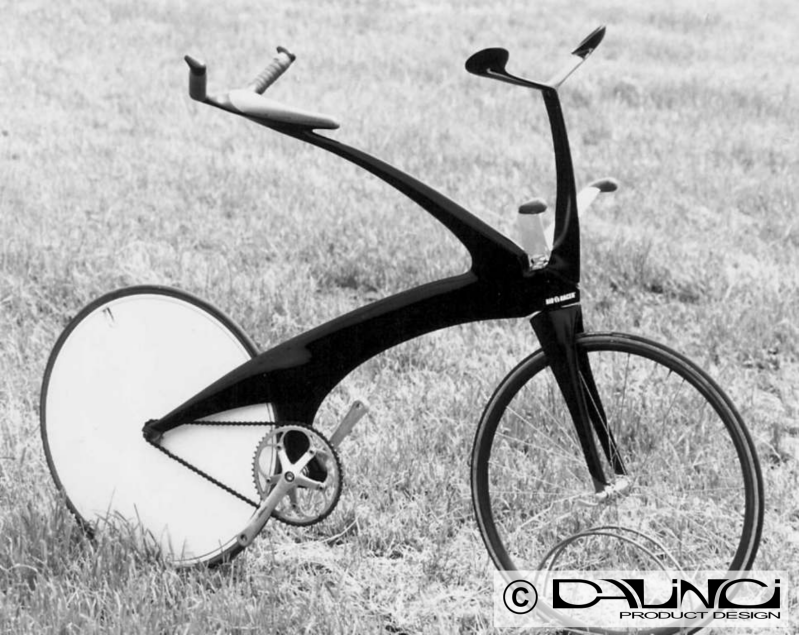World hour record study 1993-1994 :
Riding postion and bicycle design for a world hour record attack, just before the UCI changed the tehnical rules on the bikes were allowed.
Context : the design had to be compliant to the technical UCI rules of that period : recumbent or other pure aero features or parts were not allowed, position of wheel and pedals axis within the below limits :

Functional prototype with the new rider position, based on Obree and ice-skaters. Behind the saddle there's an adjustable set-up to determine the ideal position and angle of the hands and arms. The shoulders supports were also adjustable in height and length, and can swing 7cm left and right for balance purposes, around an axis running from the knee position to the middle of the saddle. There is no connection between the hand-grips and the real handlebar. Balance is kept by the self balancing effect and slight weight shifts of the shoulder, like riding with no hands. This is only an ergonomic and functional test set-up to validate and determine the human interfaces, built onto an existing road bike. Gear shifters, brakes, and the adjustable set-up will not be needed on the final bike design.

Final Real Life, Non-functional prototype of the bike , adapted and optimized for the newly developed rider position. Since it's a dedicated design for the world hour record, it has a fixed gear, no brakes, swinging shoulder supports, saddle and hand-grips integrated in the aerodynamic carbon mono-coque structure. Unfortunately the UCI (union cycliste international) changed it's technical rules just before the project was finished, and the whole project became obsolete.







